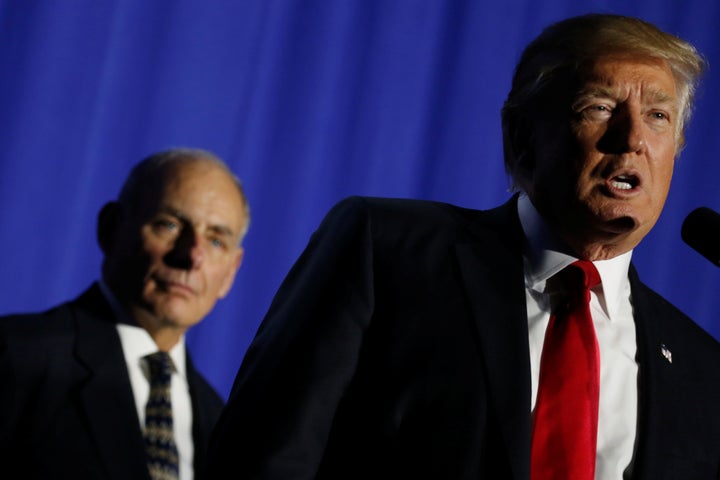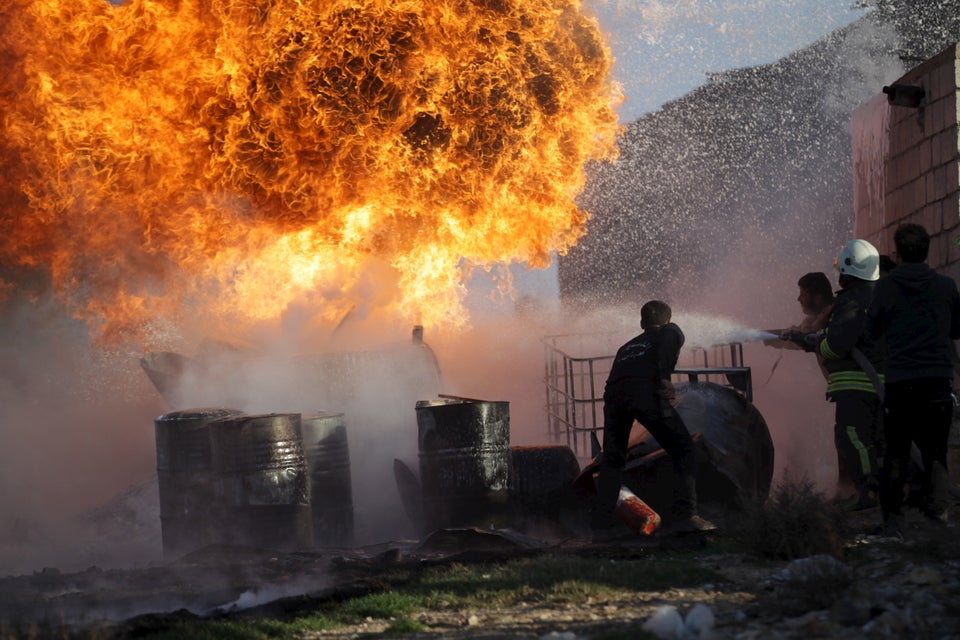President Donald Trump’s executive order freezing the United States’ refugee resettlement program, barring Syrian refugees indefinitely and temporarily restricting immigration from unnamed countries is already resulting in families being stopped at airports.
But the order is also notable for its exclusion of a provision, which appeared in an earlier draft of the order, that would have created a process for establishing so-called safe zones in Syria.
That clause would have instructed the secretary of defense to draft a plan within 90 days to create “safe zones to protect vulnerable Syrian populations,” according to a copy of the draft published by The Huffington Post on Wednesday.
The decision to omit the safe zones proposal allows the Trump administration to avoid, at least temporarily, the complex questions that such a policy would raise. Creating and protecting safe zones could increase American military intervention in Syria, and pose a number of political and logistical problems regarding its implementation.
Both Republican and Democratic officials have at times advocated for implementing safe zones in Syria. Former Secretary of State Hillary Clinton made safe zones part of her foreign policy platform during her 2016 presidential campaign, and prominent GOP figures like Sens. Marco Rubio (Fla.), Lindsey Graham (S.C.) and John McCain (Ariz.) have all advocated for the policy.
German Chancellor Angela Merkel also supported potential safe zones along the Turkey-Syria border, and has discussed the idea of havens for displaced Yazidis in northern Iraq. Turkey has previously backed the policy as well, and already controls a strip of land in Syria along its border that has become something of a de facto safe zone for internally displaced people.

Many politicians advocate safe zones as a middle ground between large-scale military intervention and inaction, while claiming they will mitigate the flow of refugees into other states. But experts say safe zones require large amounts of resources, military personnel and money to implement. Safe zones can also have unintended consequences that endanger the civilians they aim to protect.
“People tend to think of safe zones as being an easy answer, but it just isn’t,” Elizabeth Ferris, a professor at Georgetown’s school of foreign service, said. “Once you start talking about a safe zone with some kind of guarantee of security, who is going to provide that security? ... European or U.S. or Turkish troops on Syrian soil, carrying arms, without the governments permission? I think it’s a recipe for disaster, a tinder keg.”
“Safe zones, internationally, have not been terribly successful,” she added.
One of the most infamous examples of a failed safe zone is from the Bosnian civil war, after the United Nations designated the town of Srebrenica a demilitarized “safe area.” Bosnian Serb forces attacked the lightly defended town in July of 1995, killing at least 8,000 Bosnian Muslim men and boys. The attackers raped and sexually abused women and girls during the assault. Tens of thousands fled.
More than two decades later, the international community sees the Srebrenica massacre as a lesson of the potentially disastrous consequences if states and organizations are not willing to properly secure and enforce safe zones.
Even when safe zones are relatively successful, they can rack up huge costs and necessitate a large military presence. The United States and other countries deployed 20,000 troops to safeguard a Kurdish area of northern Iraq for a few months in 1991. The U.S. also implemented a no-fly zone in 1991 to protect the Kurds: It lasted for 12 years, but even this measure sometimes proved ineffective at stopping Saddam Hussein’s forces from killing Kurdish civilians.
If the United States pursues a safe zone inside Syria, there’s still the question of whether to do so as part of an agreement with Russia, Iran, Turkey and President Bashar Assad’s government ― all of whom have forces fighting in Syria.
Without an agreement with the Assad regime, Ferris and other analysts say that a safe zone could be a potential target for the so-called Islamic State, Russian airstrikes and pro-Assad forces. Defending such a haven would likely require significant security, and potentially create the conditions for the U.S. or other governments’ forces coming into conflict with Russia or Assad.
“If it’s not with the regime’s consent, then it’s basically a very hostile action – particularly if you’re going to provide any troops for security to the safe zone,” Ferris said. Defending a safe zone could therefore push the U.S. or other government forces deeper into Syria’s conflict.
Experts also highlight that safe zones are not lasting solutions, and as long as there is still conflict in Syria, it will be hard for internally displaced people and refugees to return home permanently.
